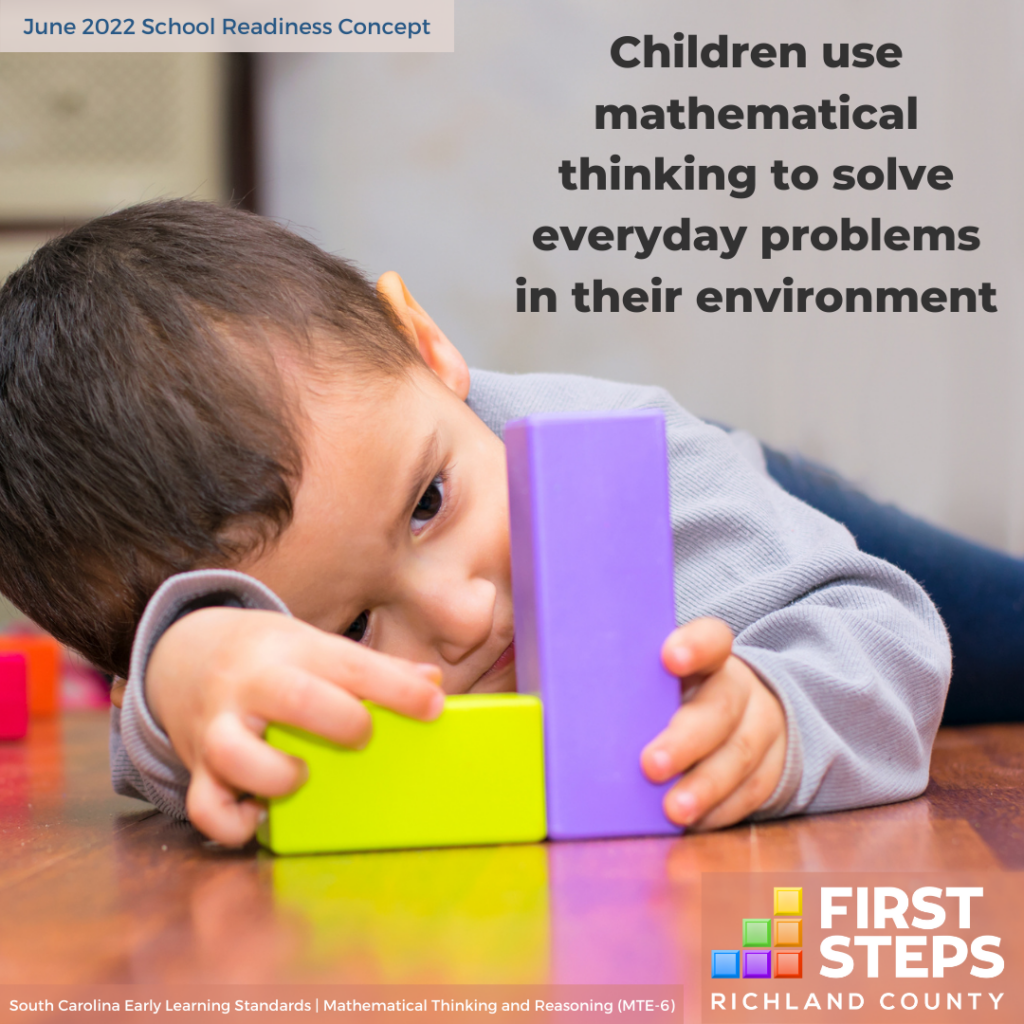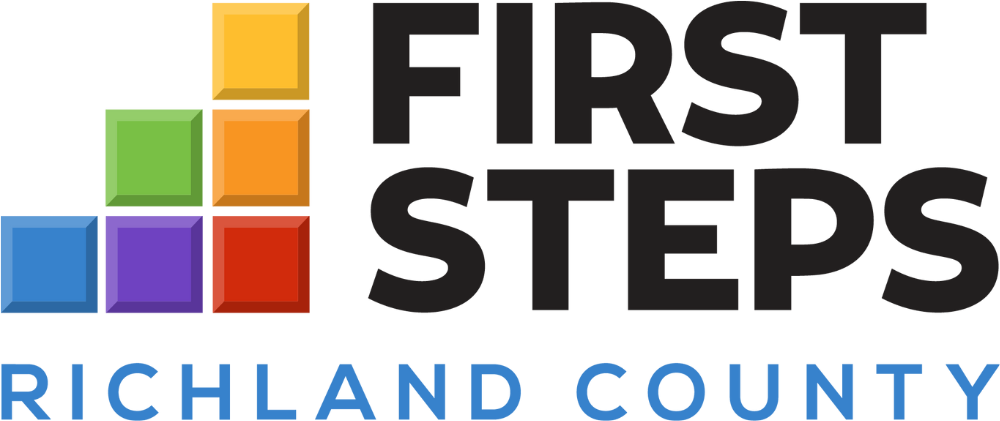
Each month, Richland First Steps selects one school readiness goal from the SC Early Learning Standards (SCELS) to spotlight throughout our programs for children, families, and child care providers.
This month’s concept comes from the Mathematical Thinking and Expression domain of the SCELS. Like all of the standards, there are developmental indicators that show a child’s progress on this goal at each stage:
Infants (Birth to 12 months)
- Emerging
Younger Toddlers (8 to 21 months)
- Emerging
Older Toddlers (18 to 36 months)
- Emerging
Younger Preschoolers (36 to 48 months)
- Seek answers to questions by using mathematical thinking (i.e., reasoning and problem solving) during play and daily activities (determine who is taller by standing next to classmate; find two smaller blocks to replace larger block).
- Use drawing and concrete materials to represent and communicate mathematical ideas (draw many circles to show “lots of people,” put craft sticks in a pile to show the number of children who want crackers for snack).
- Develop and consistently use intentional strategies when working with knobbed puzzles and similar materials.
Older Preschoolers (48 to 60+ months)
- Seek answers to questions during play and daily activities using an increasing variety of mathematical strategies (figure out how to balance a block structure; to build a bridge; to create a pattern with Lego® bricks).
- Use drawing, writing, and concrete materials to represent and communicate a variety of mathematical ideas (draw shapes to represent pattern; stack different-colored blocks to represent classmates’ answers to a survey question).
- Begin to explain how a mathematical problem was solved (“I saw that there was always a blue flower after a red flower so I knew to put a blue one next.” “I counted four friends who didn’t have crackers so I got four more.”).
- Identify and describe strategies used to complete increasingly difficult puzzles (for example, when completing a floor puzzle, working on the edges first).
Learn more:

